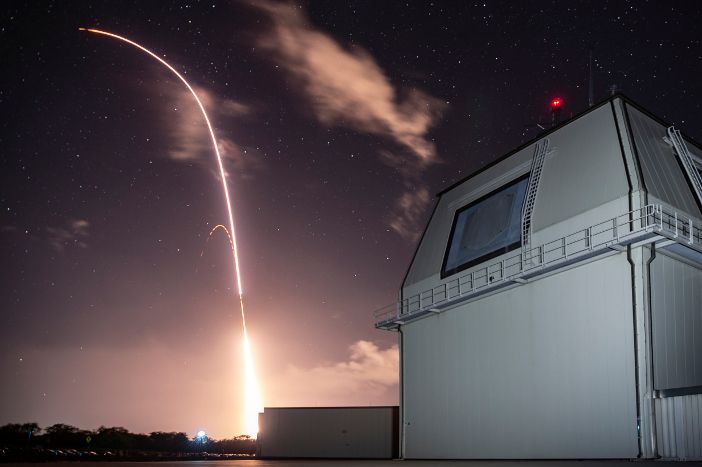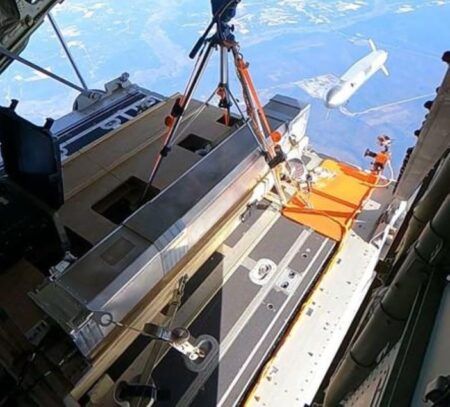An operational test of the USA’s Aegis Ashore missile defense system in Hawaii has successfully demonstrated its ability to intercept an intermediate range ballistic missile.
Aegis Ashore is the ground-based version of the USA’s ballistic missile defense system that is deployed in Poland and Romania and is planned to be acquired by Japan.
During the test an intermediate range ballistic missile (IRBM) target was air-launched by a US Air Force C-17 thousands of miles southwest of the Aegis Ashore Test site in Hawaii. The Aegis ground, air and space-based sensor/command and control, battle management and communications suite then successfully tracked the IRBM and intercepted it with an Aegis Ashore-launched Standard Missile-3 (SM-3) Block IIA interceptor missile.
The SM-3 Block IIA missile is being developed to intercept intercontinental missiles. According to Raytheon, this is the first successful test of the system intercepting a missile from the ground, the first successful test of it intercepting an intermediate range missile and the first intercept that used tracking data obtained from remote sensors, a technique known as ‘engage on remote’.
The test was conducted from the Aegis Ashore Missile Defense Test Complex at the Pacific Missile Range Facility at Kauai, Hawaii.
Director of the USA’s Missile Defense Agency, Lt. Gen. Sam Greaves said, “The successful flight test demonstrated the effectiveness of the European Adaptive Approach Phase 3 architecture. It also was of great significance to the future of multidomain missile defense operations and supports a critical initial production acquisition milestone for the SM-3 Block IIA missile program.
“This system is designed to defend the United States, its deployed forces, allies and friends from a real and growing ballistic missile threat. I offer my congratulations to all members of the team, military, civilian, contractors and allies who helped make this possible.”
Based on preliminary data, the test met its objective, and program officials will continue to evaluate system performance based on telemetry and other data obtained during the test.





